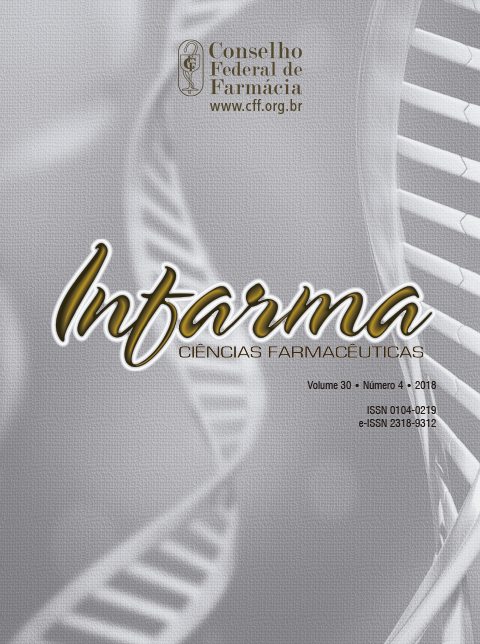In vitro evaluation of sun protection factor (SPF) of manipulated sunscreen cosmetics
DOI:
https://doi.org/10.14450/2318-9312.v30.e4.a2018.pp242-249Keywords:
sun protection factor, photoprotectors, in vitro evaluation.Abstract
Aiming to reduce the harmful effects caused on the skin by solar radiation, the use of photoprotectors is a reality these days. Based on the importance of the subject, the objective of this study was to experimentally determine by spectrophotometry in the ultraviolet region the solar protection factor (SPF); to evaluate the macroscopic and physicochemical characteristics of manipulated photoprotectors labeled SPF 30; evidencing the possibility of SPF determination by the in vitro technique as a quality control for compounding pharmacies. The results showed that the formulations appeared to be homogeneous, with normal organoleptic characteristics. The pH remained in the range of 6.30 to 7.66. In the centrifugation test, one of the samples presented slight evidence of inhomogeneity and the others did not show any change in relation to their original appearance. Regarding the SPF in vitro, one of the formulations under evaluation presented a value above the labeling and the others presented lower SPF than those declared on the labels. It is evidenced that the in vitro technique used in the work can contribute to the determination and control of manipulated products since it is a reliable technique.
Downloads
Published
How to Cite
Issue
Section
License
Authors who publish in this journal agree to the following terms:
- Authors retain the copyright and grant the journal the right of first publication, with the work simultaneously licensed under the Licença Creative Commons Attribution which allows the sharing of work with acknowledgment of authorship and initial publication in this journal.
- Authors are authorized to take additional contracts separately, for non-exclusive distribution of the version of the work published in this journal (e.g. publish in institutional repository or as a book chapter), with acknowledgment of authorship and initial publication in this journal.
- Authors are allowed and encouraged to publish and distribute their work online (e.g. in institutional repositories or on their personal page) at any point before or during the editorial process, as this can generate productive changes as well as increase the impact and Citation of published work (See O Efeito do Acesso Livre ).


